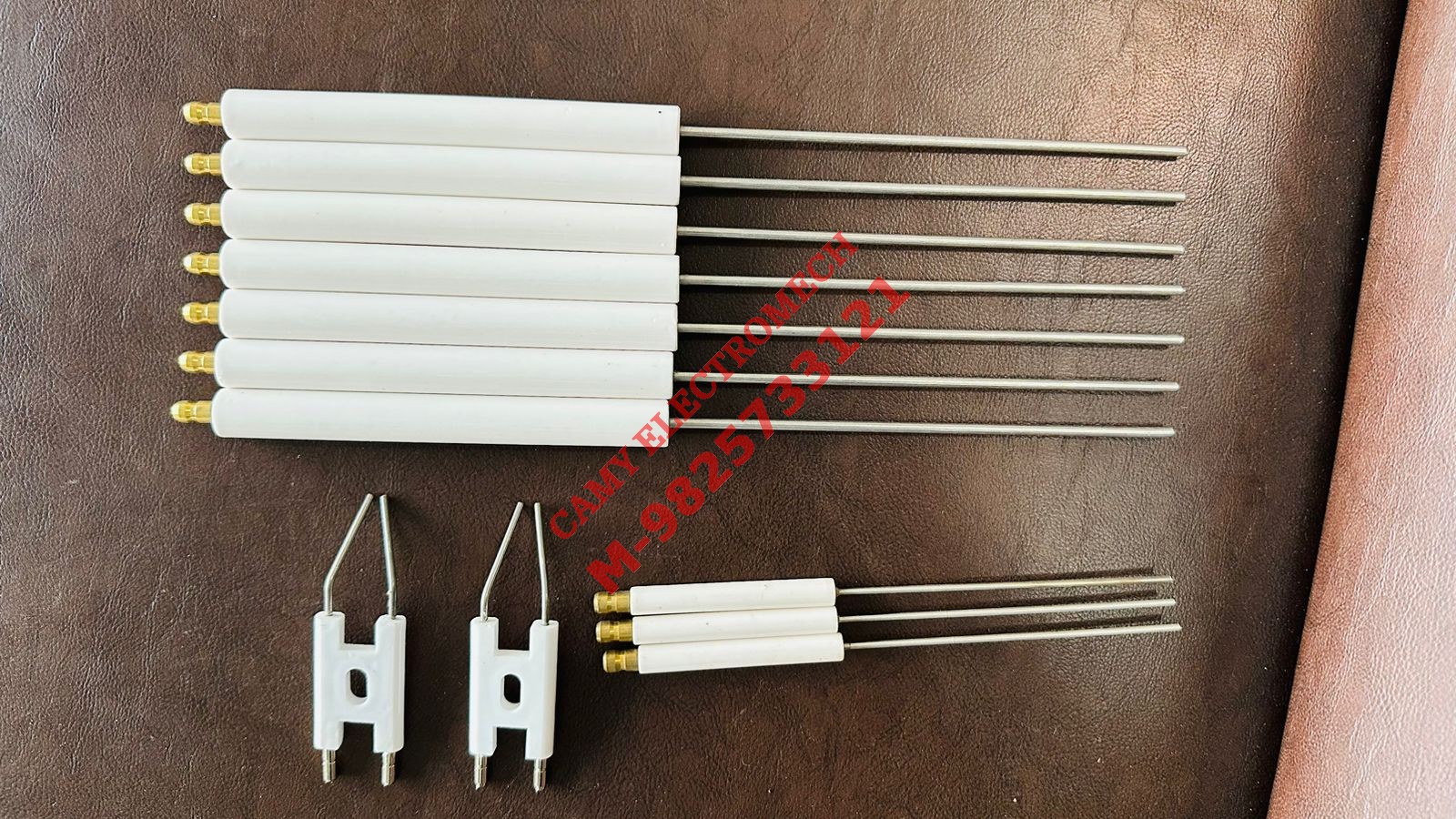
Welcome to our CAMY ELECTROMECH
We'are Open: 10:00 AM TO 7:00 PM
Ignition And Flame Sensing Electrodes


Ignition And Flame Sensing Electrodes
Description
Ignition electrodes are components used in various combustion systems, such as gas burners, oil burners, and furnaces, to initiate the ignition process. They provide a high-voltage spark or arc to ignite the fuel-air mixture and start the combustion process.
Here's an overview of ignition electrodes and their functioning:
- Composition: Ignition electrodes are typically made of a conductive material that can withstand high temperatures and resist corrosion. Common materials used include stainless steel, brass, or ceramic.
- Design: Ignition electrodes consist of two main components: the central electrode and the ground electrode. The central electrode is the one that generates the spark or arc, while the ground electrode provides a path for the spark to complete the circuit.
- Spark Generation: The ignition electrode is connected to an ignition system, which supplies a high-voltage electrical current. When the power is applied, it creates a potential difference between the central electrode and the ground electrode, generating an electric field.
- Spark Discharge: When the electric field reaches a certain threshold, it ionizes the surrounding air or fuel mixture, creating a conductive path for the spark to jump between the central electrode and the ground electrode. This spark discharge ignites the fuel-air mixture and initiates combustion.
- Alignment and Gap: Proper alignment and gap between the central electrode and the ground electrode are crucial for reliable spark generation. The gap distance is typically specified by the manufacturer based on the specific application and system requirements.
- Maintenance: Ignition electrodes may require periodic maintenance to ensure optimal performance. Over time, they can accumulate dirt, debris, or carbon deposits that can hinder spark generation. Regular cleaning or replacement may be necessary to maintain efficient ignition.
It's important to note that the design and configuration of ignition electrodes may vary depending on the specific combustion system and its requirements. Different applications may have unique electrode designs, such as surface igniters or spark plugs, tailored to their specific needs.
Proper installation, alignment, and maintenance of ignition electrodes are essential for reliable ignition and efficient combustion. Following the manufacturer's guidelines and specific system requirements is crucial to ensure safe and optimal performance.
